Some of the links in this post may be affiliate links.
Did you know that Monstera deliciosa fruit is actually an edible, delicious fruit? I’ve had the pleasure of eating it, and it is absolutely delicious (but only if it is ripe!) Keep reading to learn important details about eating this fruit.
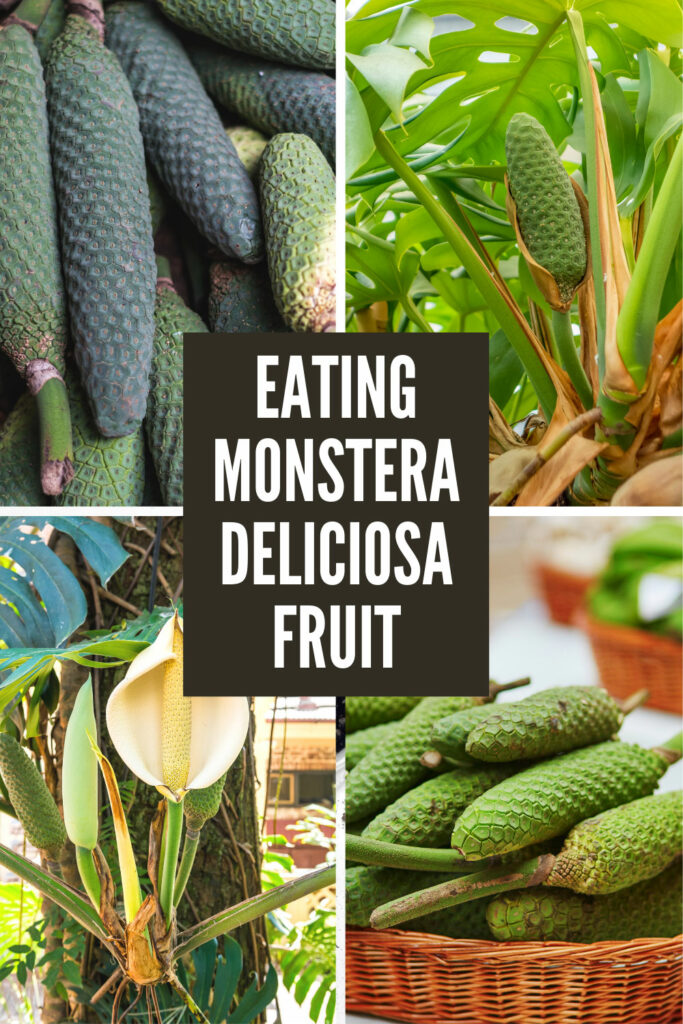
The botanical name Monstera deliciosa is very descriptive. The genus Monstera comes from the Latin word for monstrous or abnormal and refers to the unusual leaves with fenestrations (holes and slits).
The species name, deliciosa, is in reference to the tasty, edible fruit that the plant produces.
Some common names for Monstera deliciosa are swiss cheese plant, mexican breadfruit plant, and even fruit salad plant because of the delicious flavor of its fruit.
It is also sometimes called ceriman fruit and corn fruit, which makes sense because the unripe green fruit looks very similar to corn on the cob!
But did you know that there may be some unpleasant consequences if you eat the unripe fruit? How do you know if it is ripe and safe to eat? Keep reading to find out the answers to these important questions and more.
Table of Contents
5 MONSTERA DELICIOSA FRUIT FACTS
1. Is Monstera deliciosa toxic to humans?
This tropical fruit is considered a delicacy, but if it is consumed when the fruit is not ripe, the fruit contains calcium oxalate crystals which can irritate your mouth and throat and create a burning sensation.
It is only safe to eat when the fruit is ripe because the calcium oxalate dissipates. Avoid eating unripe green fruits at all costs!
How do you know when the fruit is ripe?
2. When Can You Eat Monstera Fruit?
The fruits will grow about 12 inches long, and it resembles a green ear of corn. In a ripe, mature fruit, the green scales will start to lift and break open to reveal a creamy flesh that you can eat.
Here is a fruit that is not ripe yet and is still on the plant.
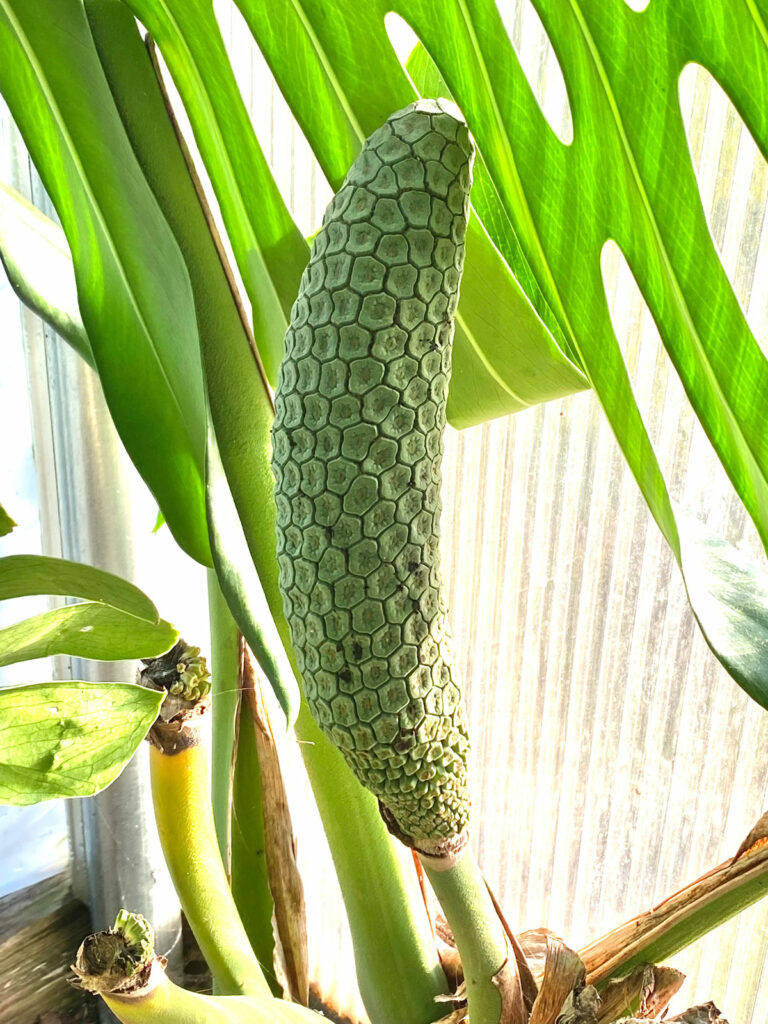
Ripening will start at the base of the fruit and then it gradually will ripen towards the tip.
Here is the same fruit shown above, still on the plant, with some of the scales that opened up on their own to expose the edible fruit underneath.
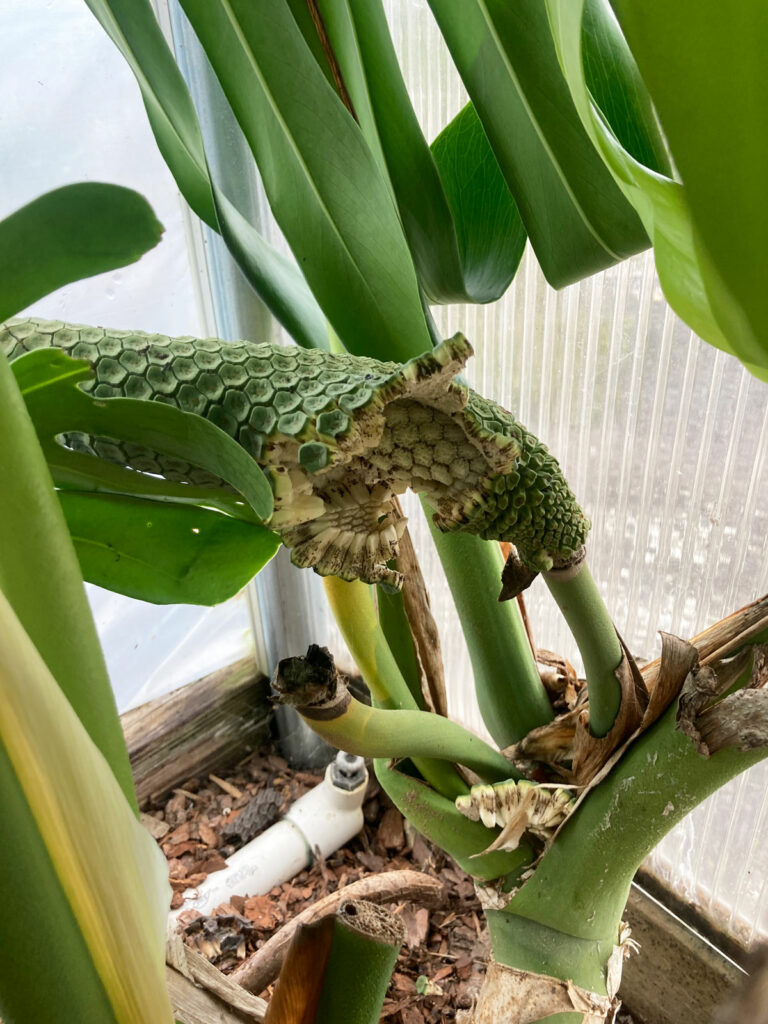
After the green, hexagonal scales start to fall off, you will start to notice a delicious fragrance. Here is a ripened fruit.
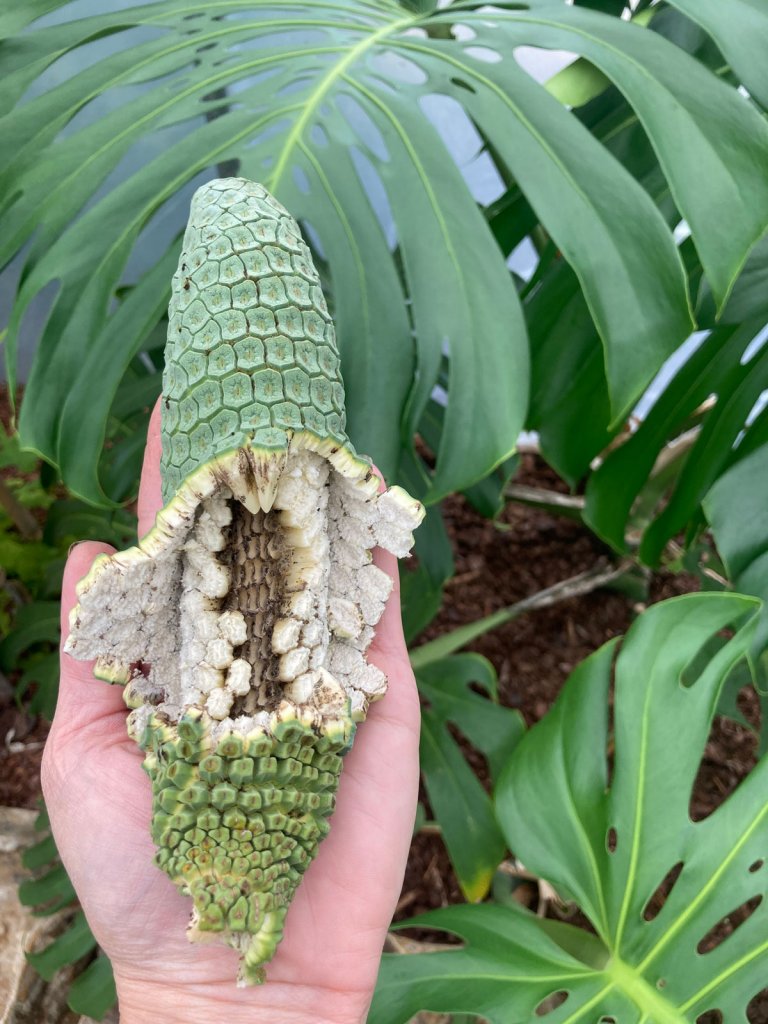
In the photo above, the green scales have started to open up on their own, revealing the edible, creamy flesh underneath.
You can also start to gently peel away the green scales. If they don’t come off easily, the fruit underneath is not ripe.
If you have a fruit where the scales have not peeled away and you’re wondering how to ripen your Monstera deliciosa fruit, try this. To encourage ripening, one technique is to place the fruit in a brown paper bag, close it, and set it aside somewhere (room temperature) until the scales open up like in the photo below.
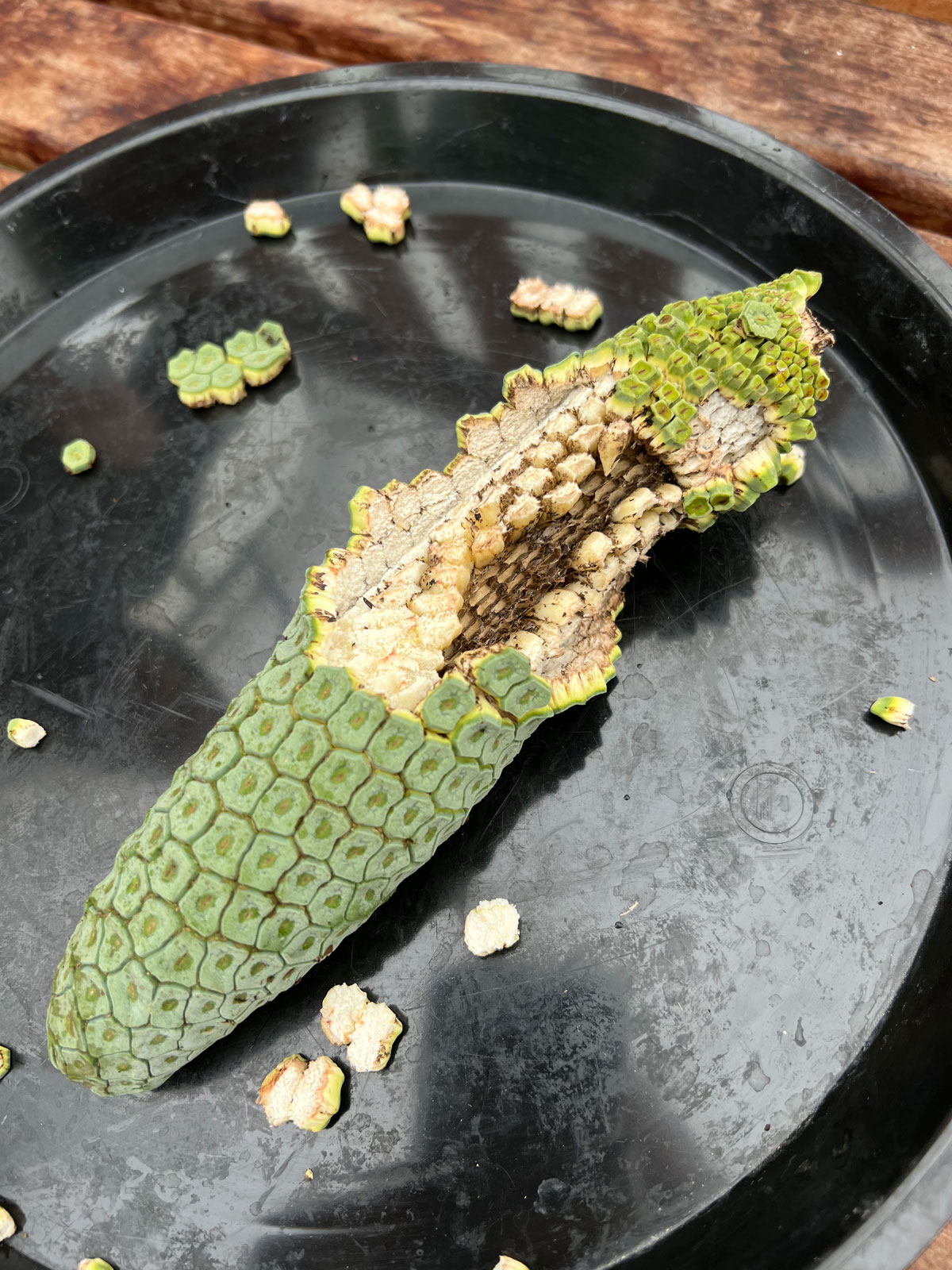
3. What Does Monstera Deliciosa Fruit Taste Like?
I had the pleasure of tasting the fruit for the first time, and true to the species name, deliciosa, the fruit was, well…absolutely delicious.
People will describe the flavor in many different ways, but a traditional explanation is that the fruit tastes like a combination of banana and pineapple.
And I agree with this assessment. It has the sweetness of a banana with some light acidic notes similar to a pineapple.
Some people also say that they taste hints of strawberry, or even a passion fruit taste.
The fruit is a good source of potassium and vitamin C (and did I mention it’s delicious?)
4. Does Monstera Fruit Indoors?
Although the Monstera deliciosa plant is an absolutely amazing and easy to grow plant indoors, the chances of it flowering and fruiting under average indoor home conditions are slim to none.
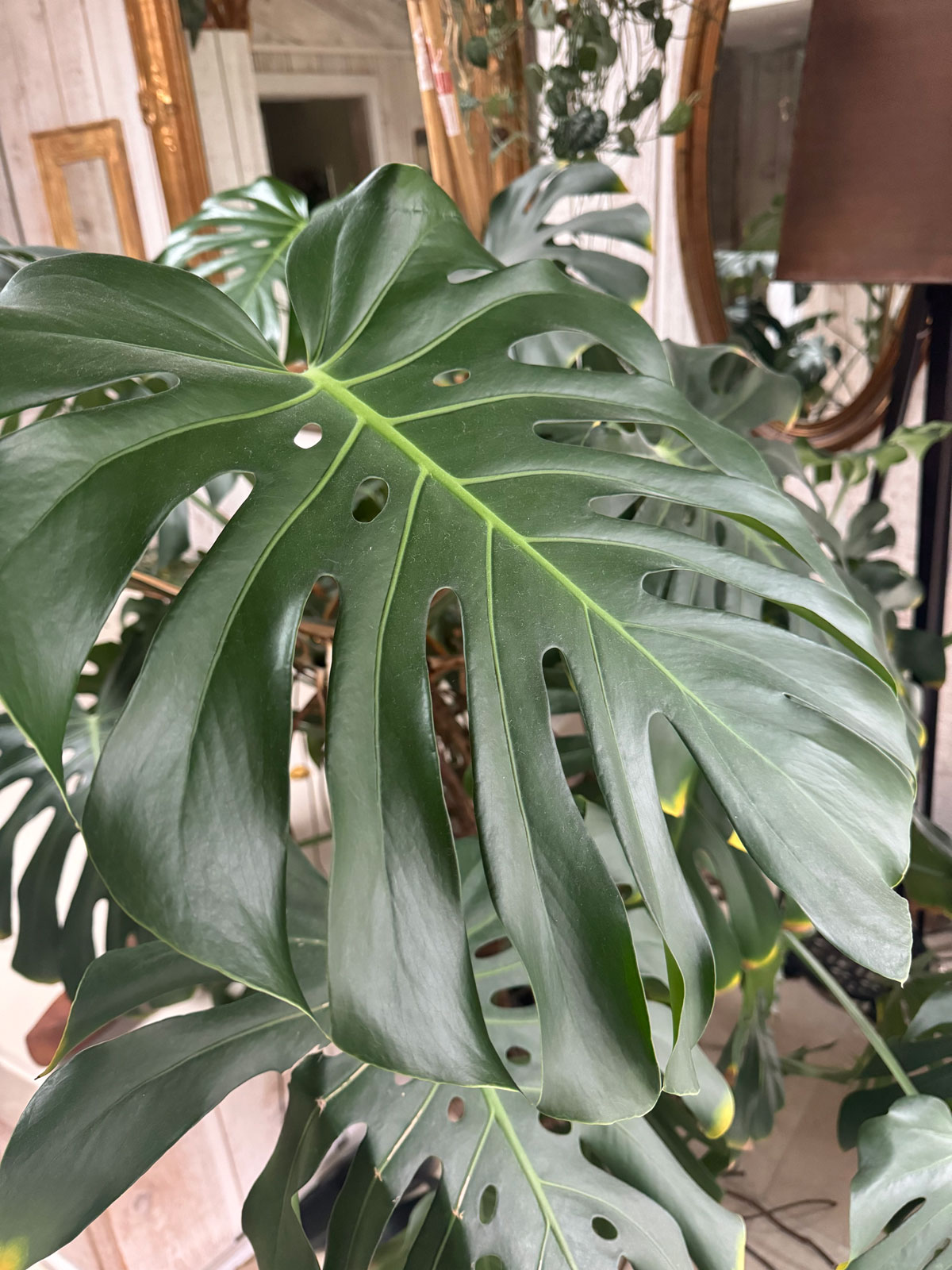
The native habitats of these Monstera plants are tropical areas spanning from southern Mexico to Central America. In those climates, and similar climates elsewhere, they will fruit easily when planted in the ground.
These plants thrive in warm climates with high humidity, and in areas where they have enough room to grow. They will use their plentiful, cord-like aerial roots to climb trees and seek out water.
As you saw in a previous photo, the fruit that I tasted was actually grown in Ohio, but the plant was in the ground in a hoop house (basically a greenhouse).
Plants grown indoors in a home in a pot will likely never flower or set fruit. However, that being said, if you look at the many comments from my readers on this post, some of my readers have reported that their Monstera deliciosa plants have set fruit indoors for them! This is an exception rather than a rule, however.
5. How long does it take to harvest a Monstera fruit?
Of course it depends on the growing conditions, but it takes approximately a year after flowering occurs. Just make sure that your fruit has scales that peel away easily like in the photo below (this indicates that it is ripe), otherwise eating it will be a painful experience!
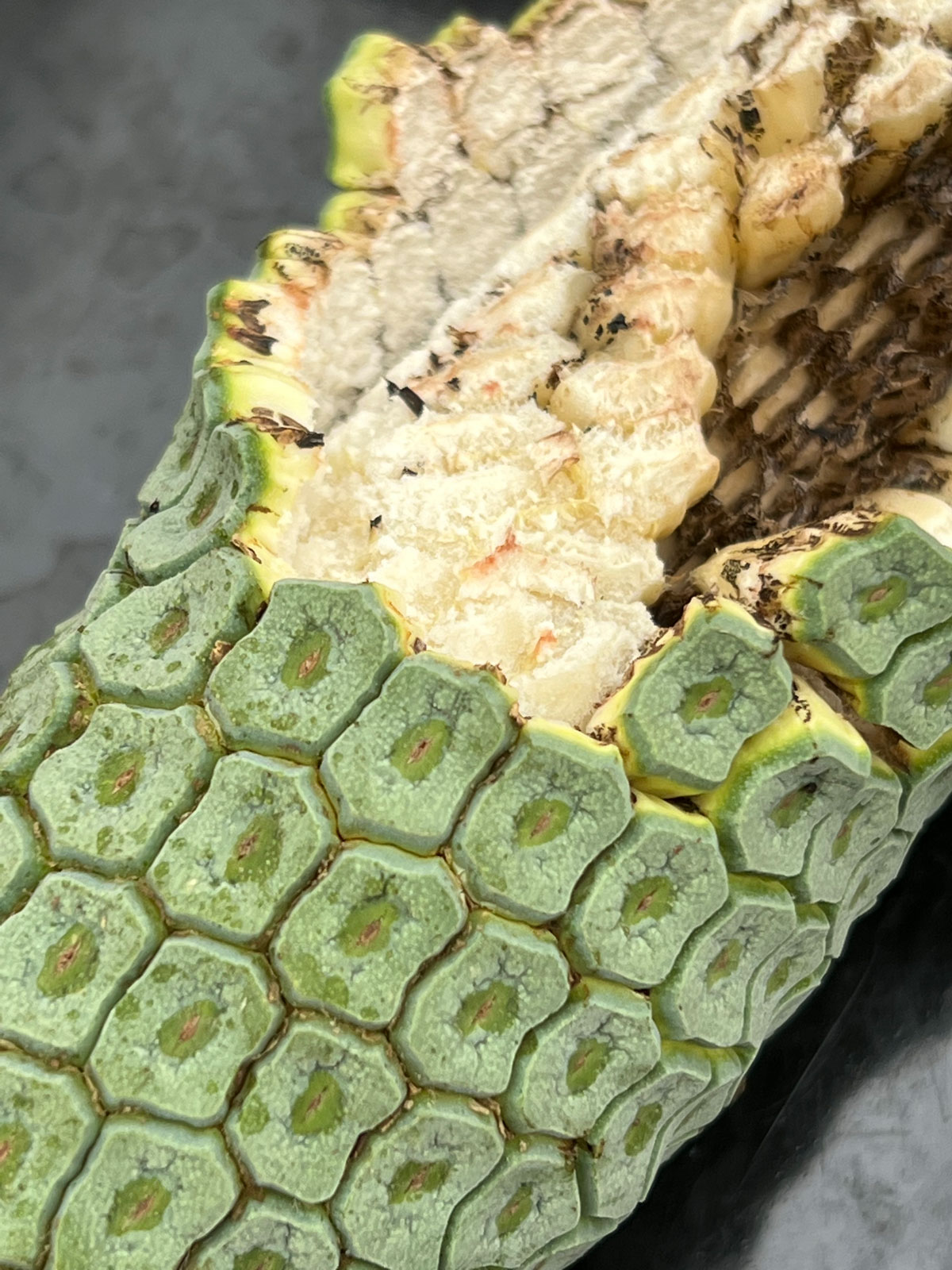
RELATED POSTS
If you’d like to find out more about growing this plant at home, don’t miss my posts:
Monstera deliciosa care and repotting
Monstera problems and solutions
Have you ever tasted a Monstera deliciosa fruit? Comment below. I’d love to hear!

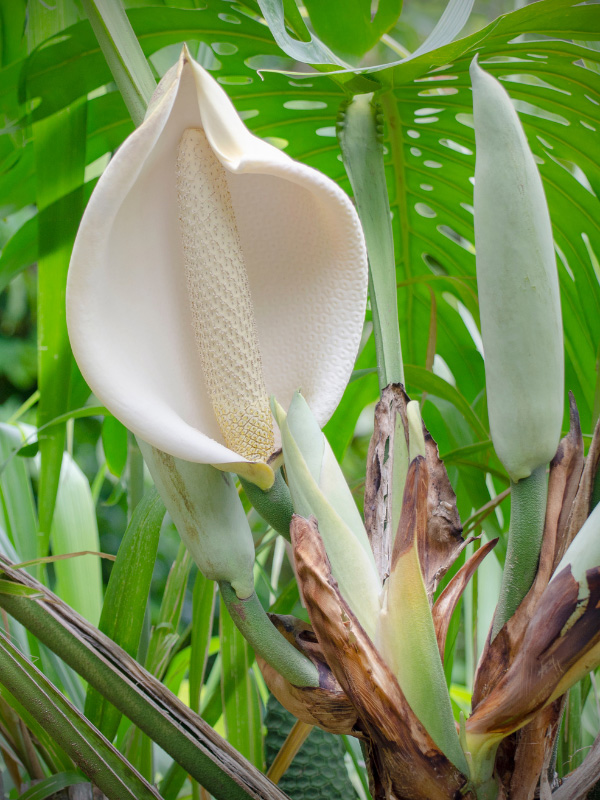
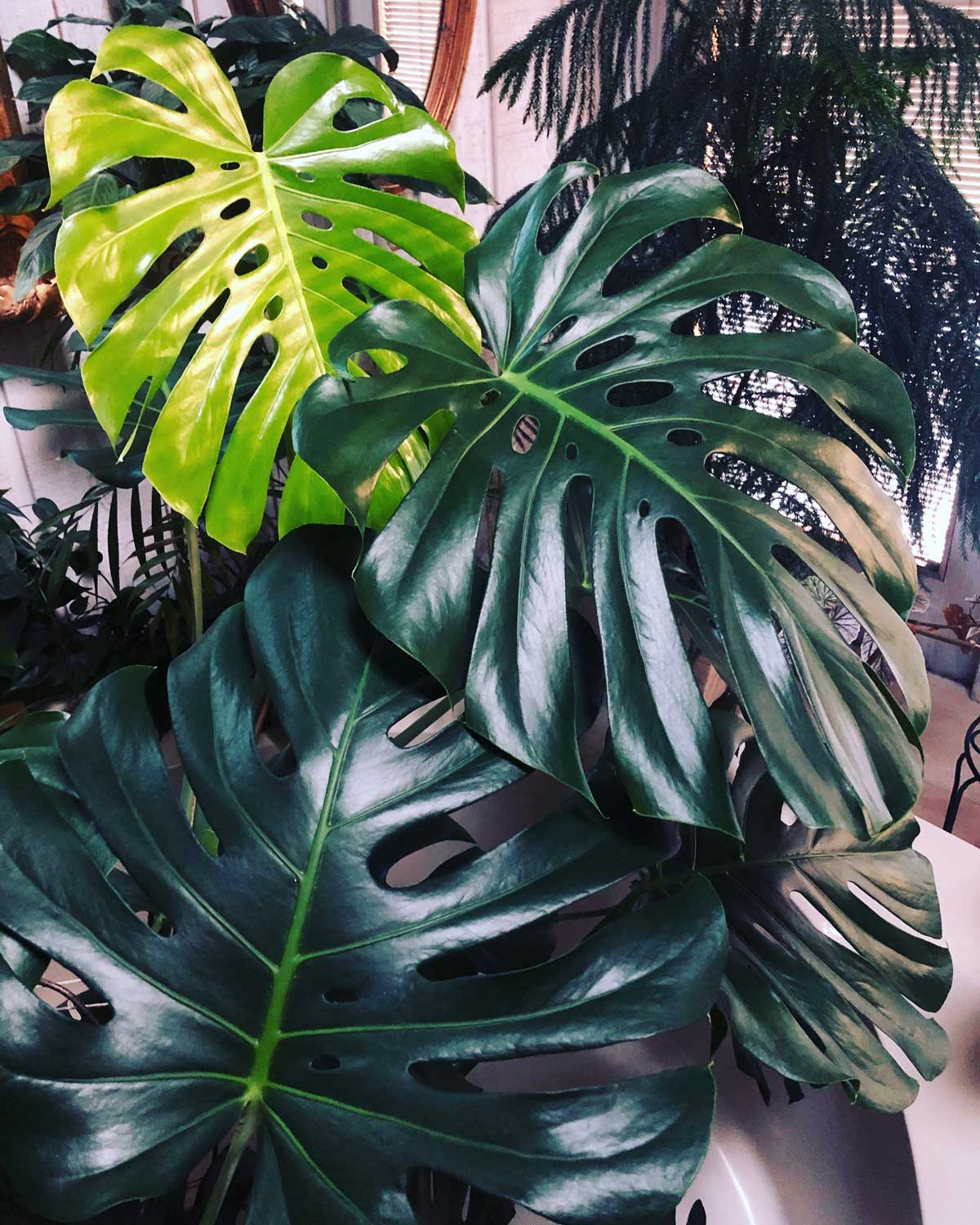
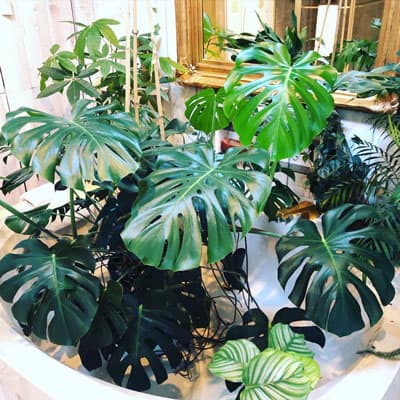
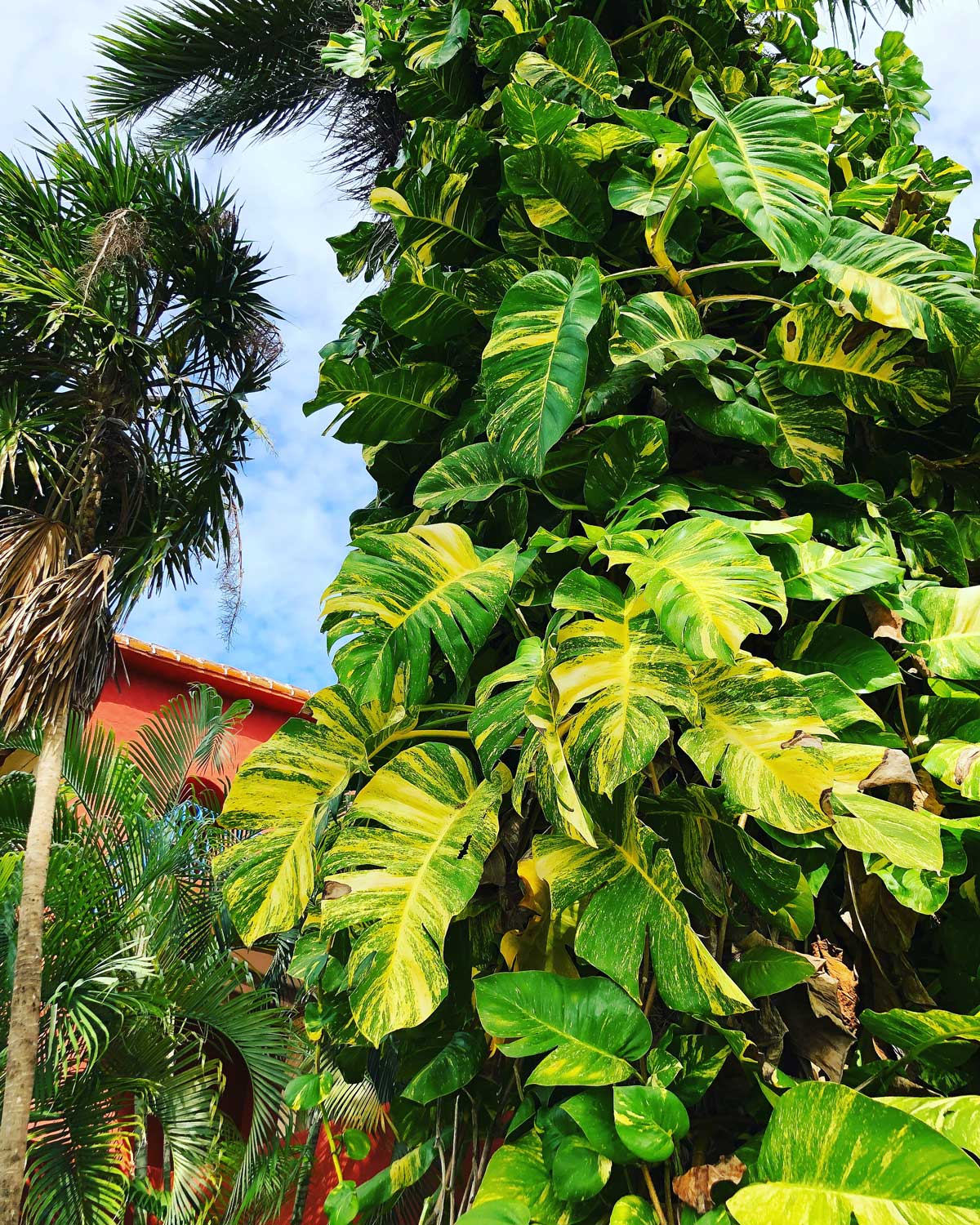

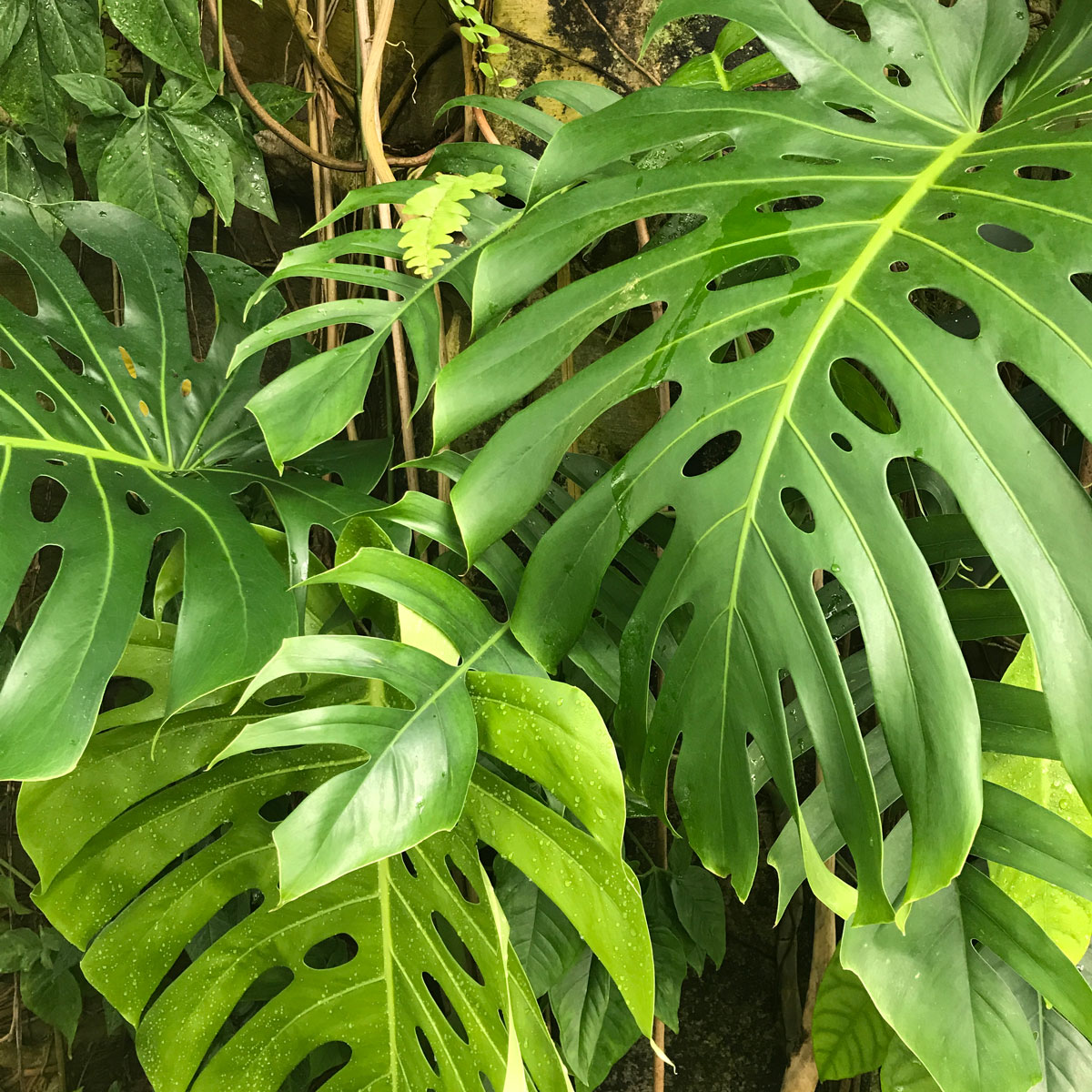
Diane
Wednesday 15th of October 2025
I am lucky to have one in my veranda and is had two flowers and now 2 fruits growing already a couple of months. (Belgium) I wait and see what happens. Thanks a lot for this very tasty information ;o)
Raffaele Di Lallo
Wednesday 15th of October 2025
You're very welcome Diane, and how exciting! :-)
David Spencer
Monday 5th of August 2024
I have some growing in my backyard. I had no idea what it was until now. Thank you for a wonderful article. Can't wait for them to ripen. What is the large white thing that looks like an orchids bloom?
Raffaele Di Lallo
Wednesday 7th of August 2024
You're very welcome! The large white thing is the inflorescence.
Rachael Chester
Thursday 18th of January 2024
Hi, wish I could send a picture, but my monstera variegated albo - a cutting from a year ago, has just produced 4 fruit pods. :)
Raffaele
Thursday 25th of January 2024
Wow!! Are you on Instagram? You can DM me there (@ohiotropics).
Andrew
Tuesday 2nd of January 2024
Hello. I have an old plant in Melbourne, Australia that surprised me by 'flowering' repeatedly over the past year. But then I think possums must be taking them because the fruit disappear after a couple of weeks. Two of the photos at the top of this page show a pile of picked fruit that clearly aren't ripe yet. Will they ripen properly like this instead of leaving them on the plant?
Raffaele
Wednesday 3rd of January 2024
Hi Andrew. They take several months to a year on the plant to mature and ripen. I'd imagine that if you pick it too early, it probably won't ripen. It's just my hunch though.
Khaled The Frog
Thursday 24th of August 2023
Slim to none huh? I have a big indoor Monstera and on its 5th year it produced one flower and subsequent fruit, on its 6th and 7th year it produced 3 flowers and fruits, but this year so far none.
Raffaele
Saturday 26th of August 2023
Wow, that's great! It's possible, but it just doesn't occur that often indoors. That's great that yours fruited :-)